DNA Mutation Worksheet
A DNA mutation worksheet is a valuable resource for biology students who are studying genetics and molecular biology. This worksheet provides a structured approach for understanding the concepts of DNA mutations, their causes, and their effects on gene expression. By working through the questions and activities on this worksheet, students can gain a deeper understanding of the role of mutations in genetic disorders and evolution.
Table of Images 👆
- Genetic Mutation Worksheet Answer Key
- DNA Mutations Practice Worksheet Answer Key
- Gene Mutations Worksheet Answers
- DNA Mutations Worksheet Answer Key
- Mutations Worksheet Answer Key
- Mutations Worksheet
- Gene and Chromosome Mutation Worksheet Answer
- Gene Mutations Worksheet Answer Key
- Genetic Mutation Worksheet Answers
- DNA Codon Chart Worksheet
More Other Worksheets
Kindergarten Worksheet My RoomSpanish Verb Worksheets
Cooking Vocabulary Worksheet
DNA Code Worksheet
Meiosis Worksheet Answer Key
Art Handouts and Worksheets
7 Elements of Art Worksheets
All Amendment Worksheet
Symmetry Art Worksheets
Daily Meal Planning Worksheet
What is a DNA mutation?
A DNA mutation is a change in the nucleotide sequence of a DNA molecule. This alteration can occur due to various factors such as errors during DNA replication, exposure to mutagens like radiation or chemicals, or spontaneous genetic changes. Mutations can lead to changes in the function or expression of genes, which may result in differences in traits and characteristics in an organism.
What are the different types of DNA mutations?
There are several types of DNA mutations, including substitutions (where one nucleotide is replaced with another), insertions (where an extra nucleotide is added), deletions (where a nucleotide is removed), duplications (where a section of DNA is copied), and inversions (where a section of DNA is reversed). Additionally, mutations can be classified as missense (where a different amino acid is produced), silent (where the amino acid sequence is unchanged), or nonsense (where a premature stop codon is introduced).
What causes DNA mutations?
DNA mutations can be caused by various factors such as exposure to certain chemicals, radiation, errors in cell division, and environmental factors. Additionally, mutations can also occur spontaneously during DNA replication. These mutations can lead to changes in the genetic code, which may result in altered protein production and potential genetic disorders or diseases.
How do substitutions differ from insertions and deletions?
Substitutions involve replacing one element with another, while insertions involve adding new elements into a sequence, and deletions involve removing existing elements from a sequence. Substitutions specifically change the value of an item in a sequence, while insertions and deletions alter the length of the sequence by adding or removing elements.
What is a frameshift mutation?
A frameshift mutation is a type of mutation that involves the addition or deletion of nucleotides in a DNA sequence, causing a shift in the reading frame during translation. This can lead to a completely different amino acid sequence being produced, potentially resulting in a non-functional or dysfunctional protein being synthesized.
What are the potential consequences of DNA mutations?
DNA mutations can have various consequences including genetic disorders, increased risk of diseases such as cancer, altered physical or developmental traits, and reduced ability of cells to function properly. Additionally, mutations can impact an individual's reproductive health and potentially be passed on to future generations. In some cases, mutations may not have noticeable effects, while in other instances they can lead to serious health issues or even be fatal. Regular genetic testing and monitoring can help identify mutations early and possibly mitigate their negative impacts.
How do silent mutations impact protein production?
Silent mutations are mutations that do not result in any change to the amino acid sequence of a protein. As a result, they do not impact protein production as the final protein product remains unchanged. However, silent mutations can still have an effect on protein function or structure, such as altering mRNA stability, splicing, or translation efficiency, which in turn may impact the overall protein expression levels or function within the cell.
What is a missense mutation and how does it affect protein function?
A missense mutation is a type of genetic mutation where a single nucleotide change in the DNA sequence results in the substitution of one amino acid for another in the corresponding protein sequence. This alteration can either have no effect on protein function, lead to a loss of function, or cause a gain of function. Depending on the specific amino acid change and its location within the protein, a missense mutation can disrupt the normal structure and function of the protein, potentially affecting its activity, stability, interaction with other molecules, or cellular localization.
What is a nonsense mutation and how does it truncate protein synthesis?
A nonsense mutation is a type of genetic mutation that introduces a premature stop codon into the coding sequence of a gene, leading to the production of a truncated or incomplete protein. The premature stop codon signals the ribosome to terminate protein synthesis prematurely, resulting in a shorter protein that is typically nonfunctional or unstable. This can disrupt the normal function of the protein and lead to various genetic disorders or diseases.
How do DNA repair mechanisms help in preventing mutations?
DNA repair mechanisms help in preventing mutations by identifying and fixing errors that occur during DNA replication and damage caused by external factors like radiation or chemicals. These mechanisms ensure that mutations, which can lead to diseases such as cancer, are corrected before they are passed on to subsequent generations. By constantly monitoring and repairing DNA, cells can maintain the integrity of their genetic information and prevent harmful mutations from accumulating over time.
Have something to share?
Who is Worksheeto?
At Worksheeto, we are committed to delivering an extensive and varied portfolio of superior quality worksheets, designed to address the educational demands of students, educators, and parents.

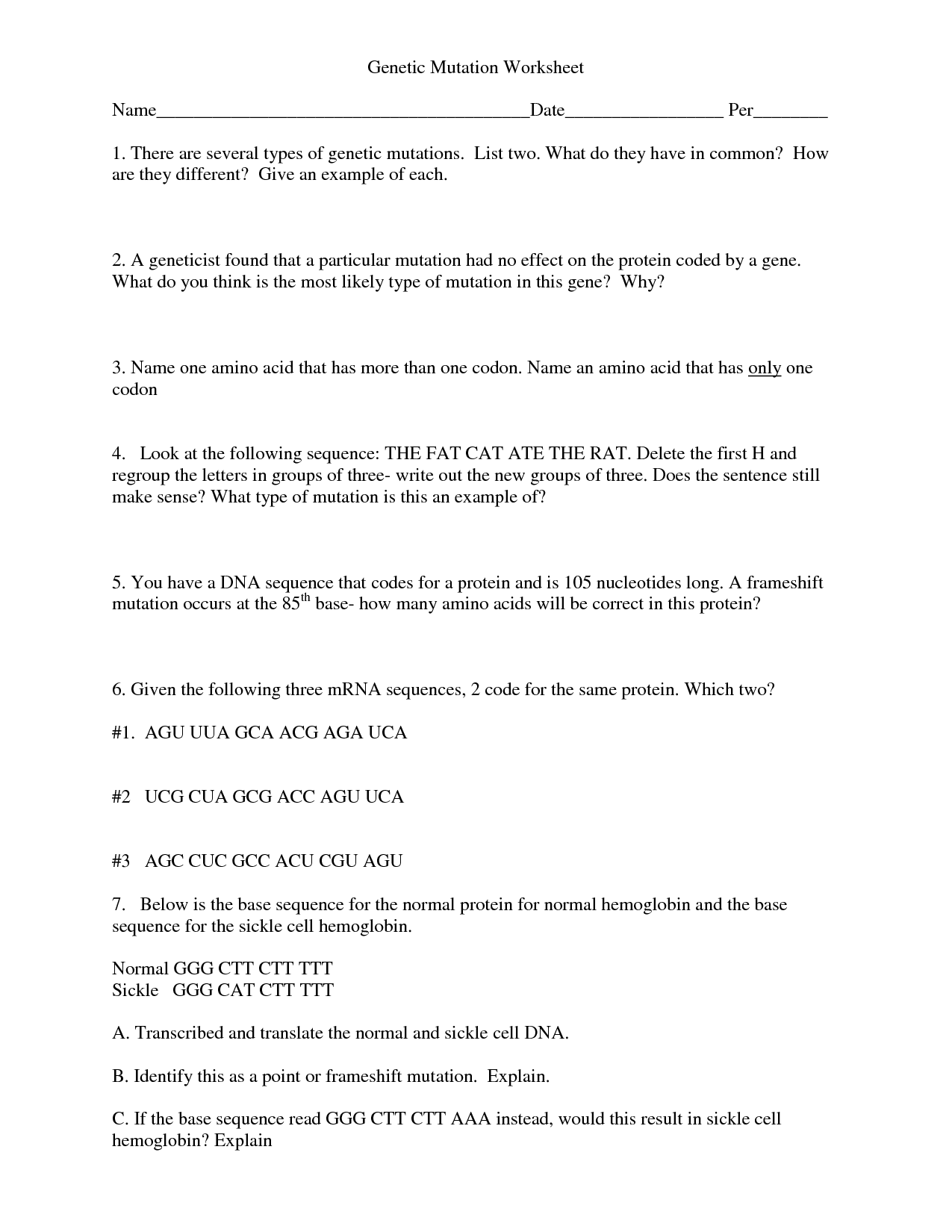



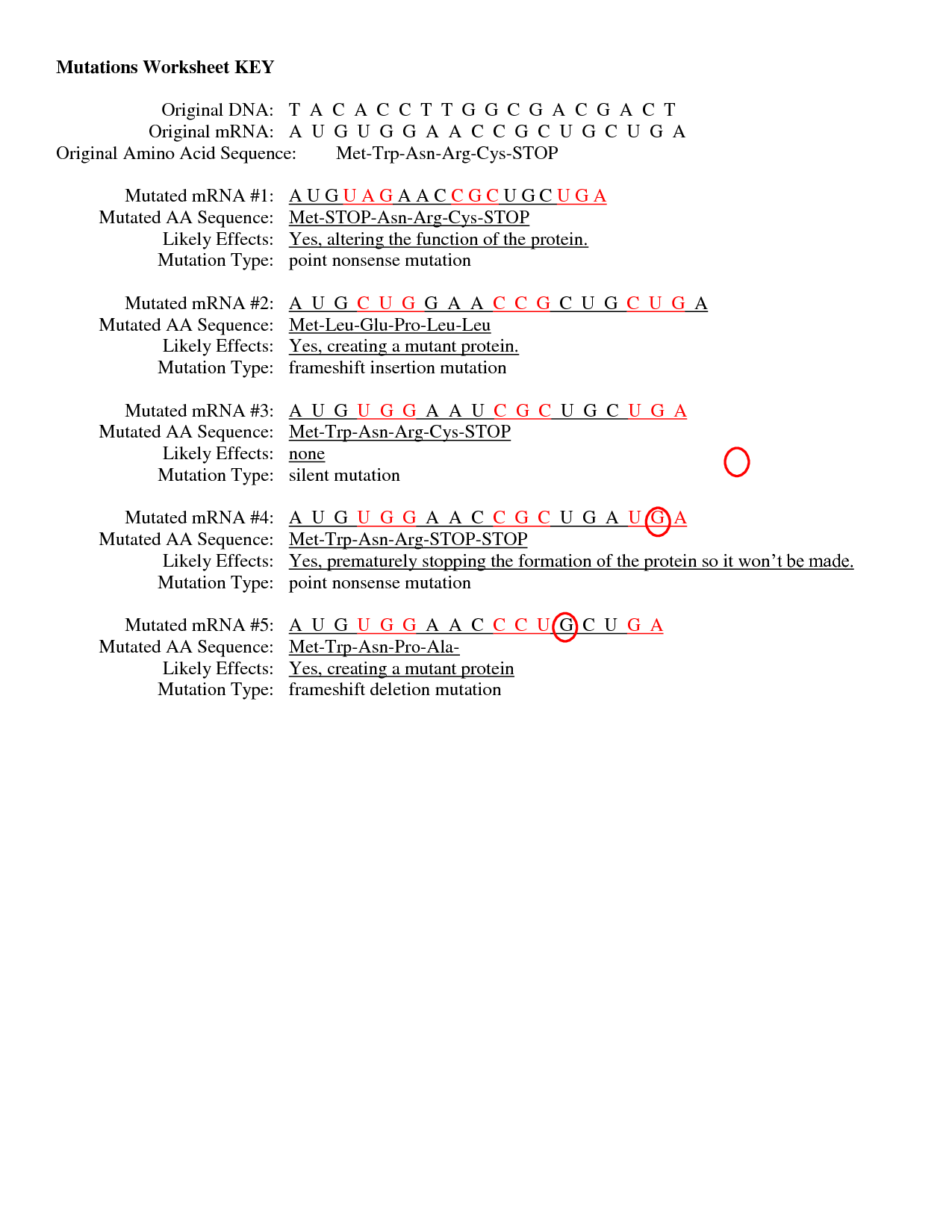
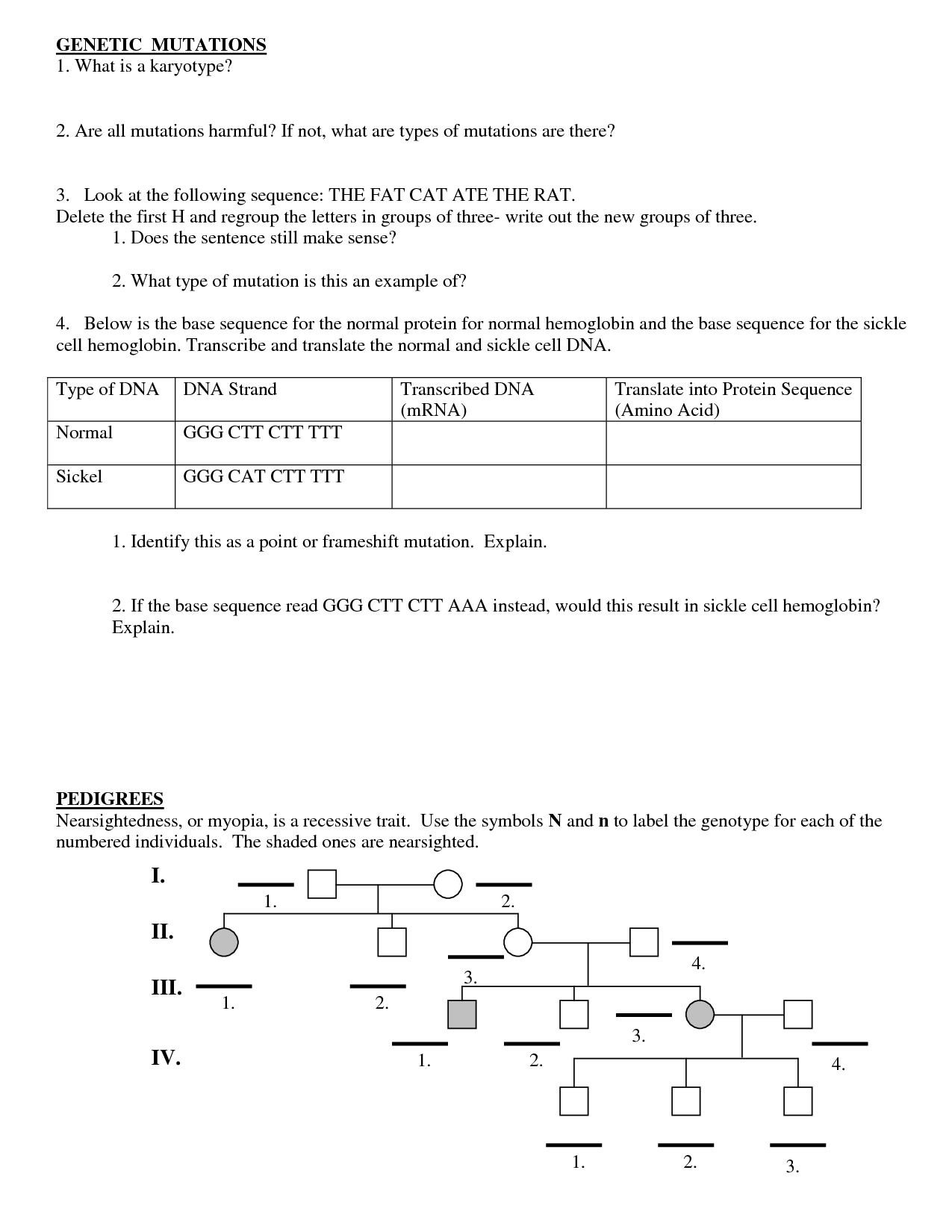
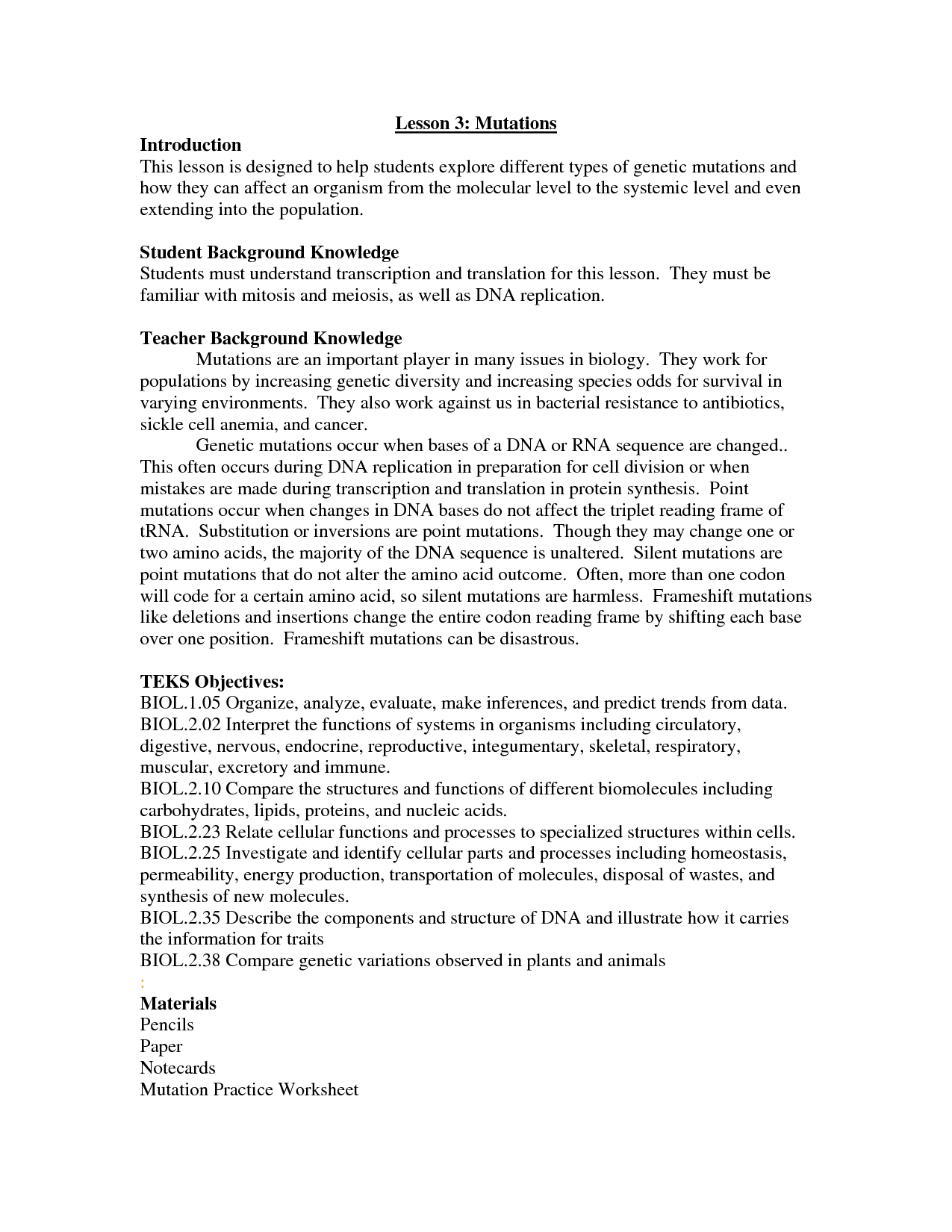
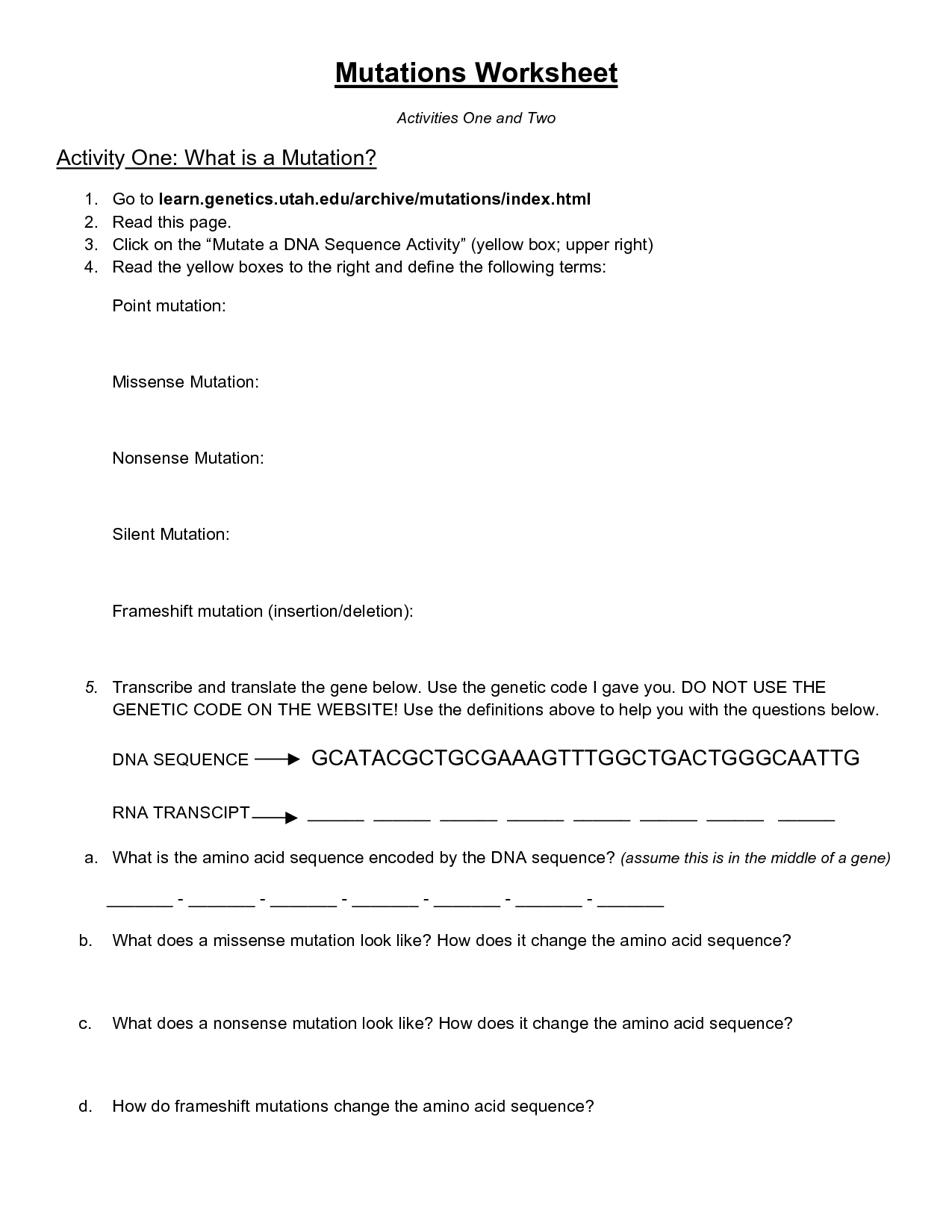
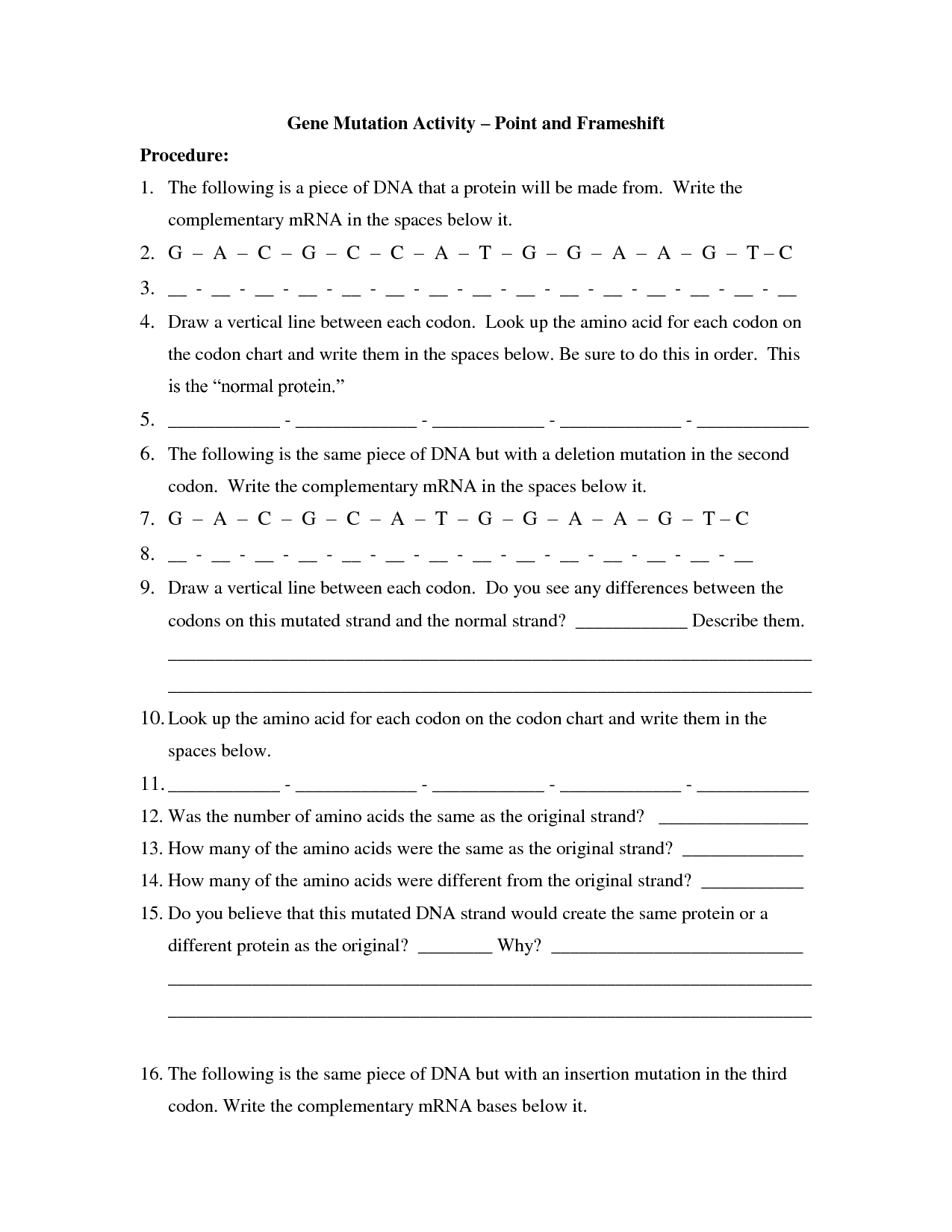
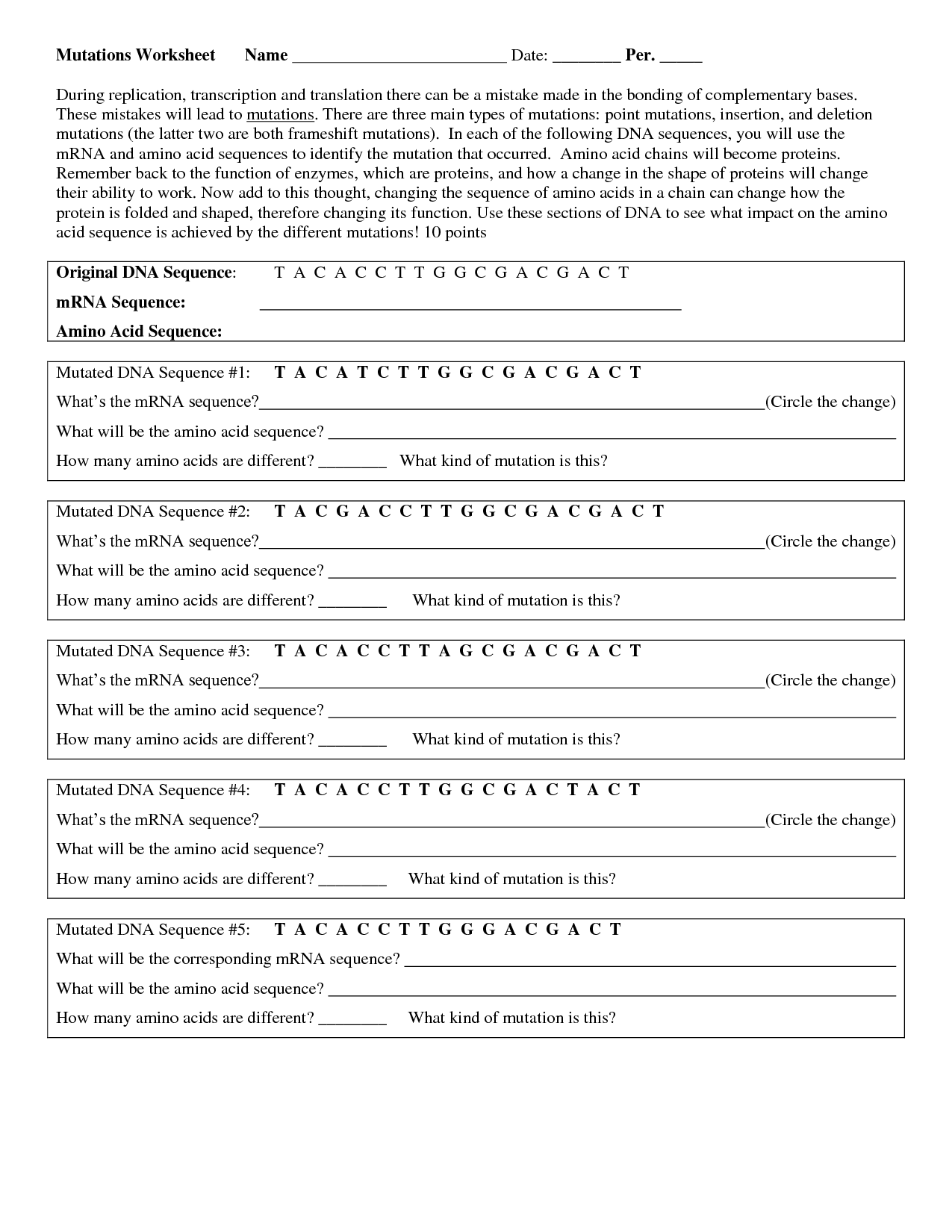
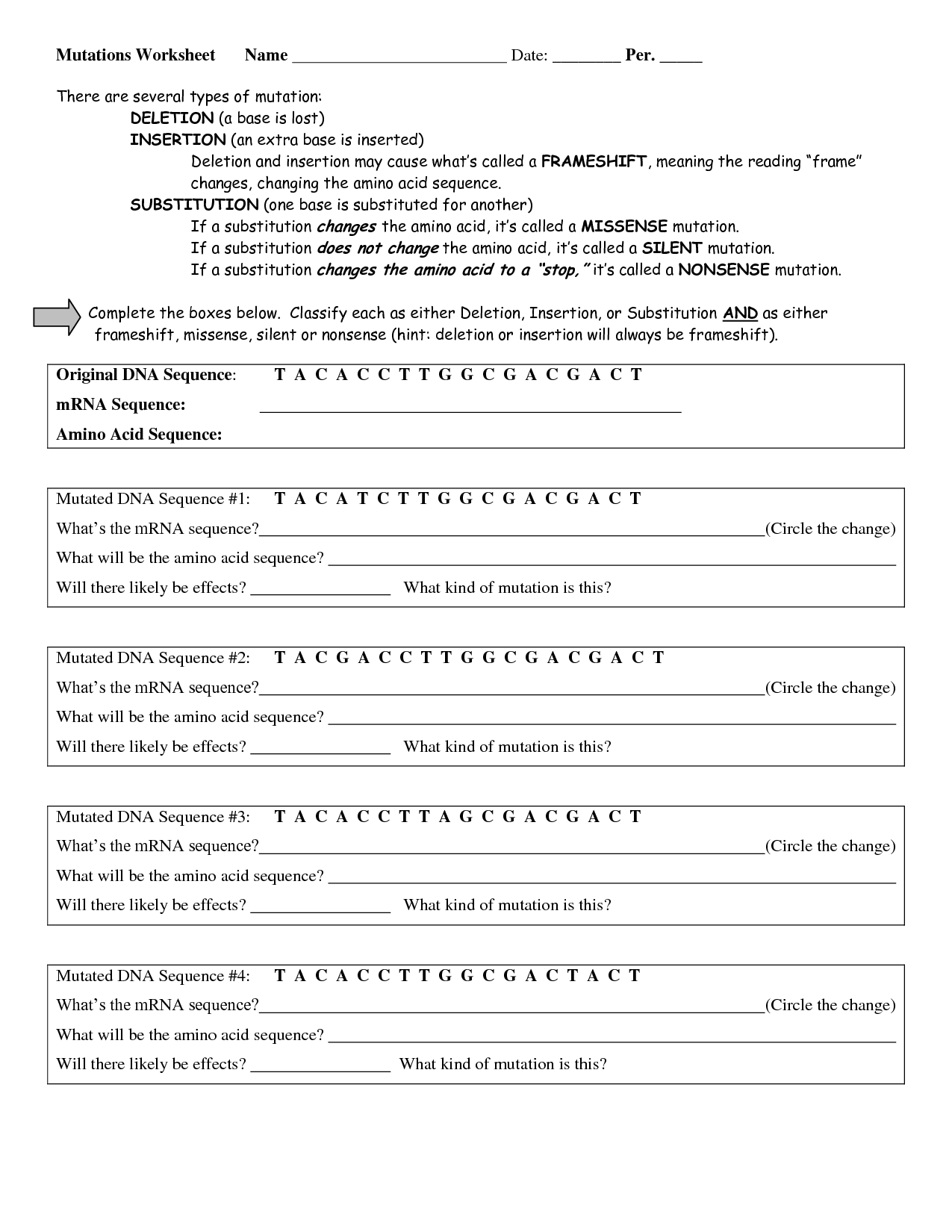
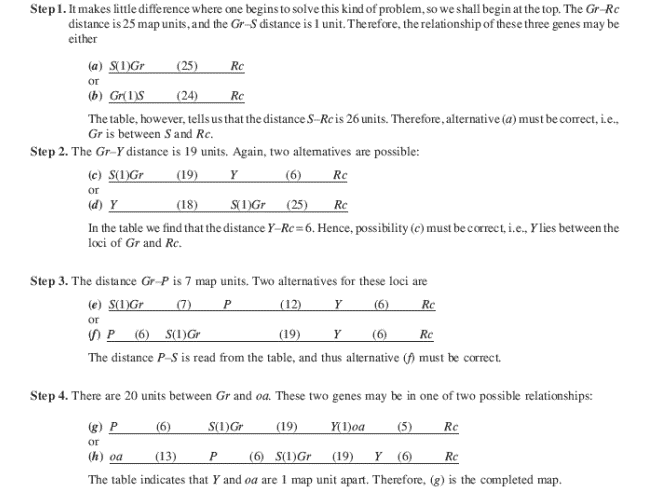
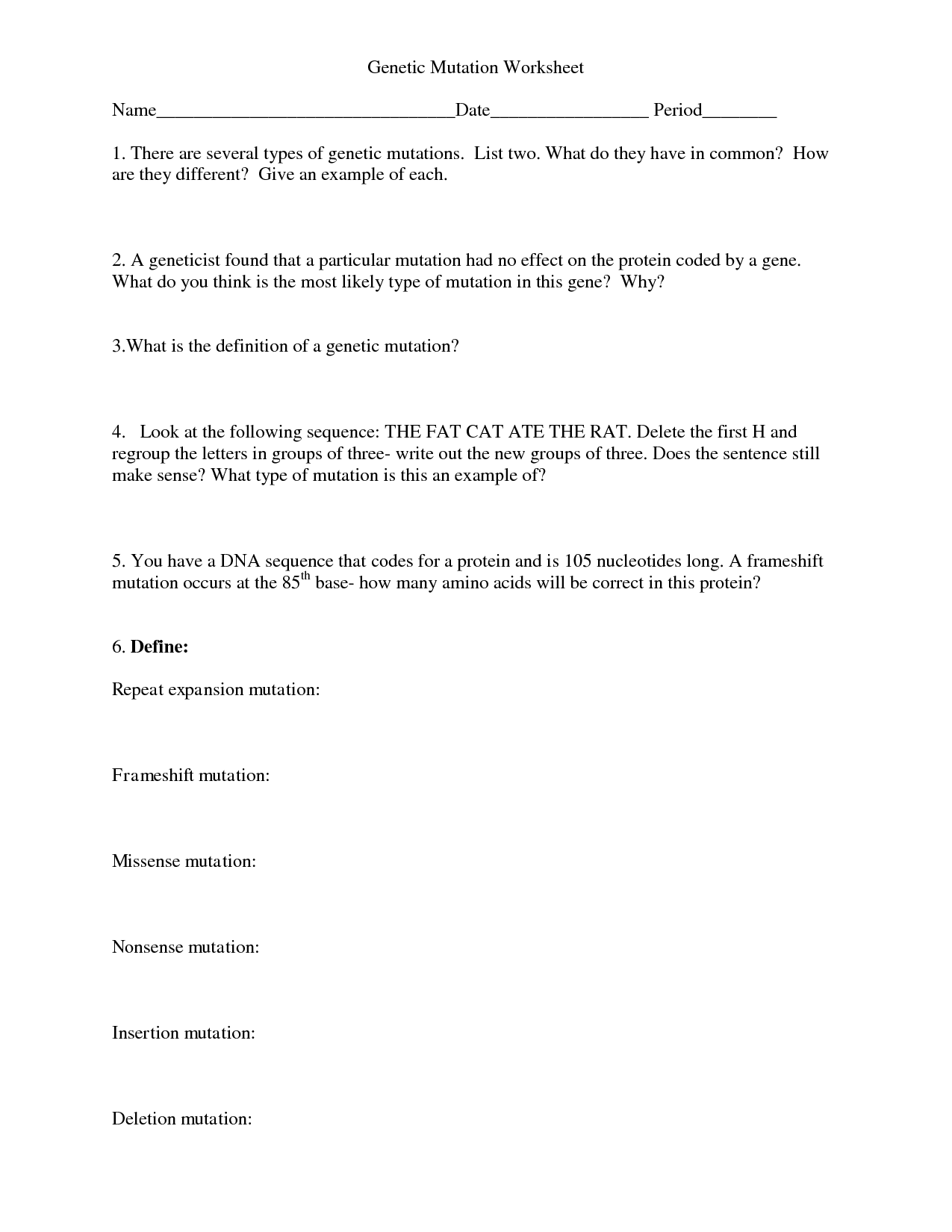
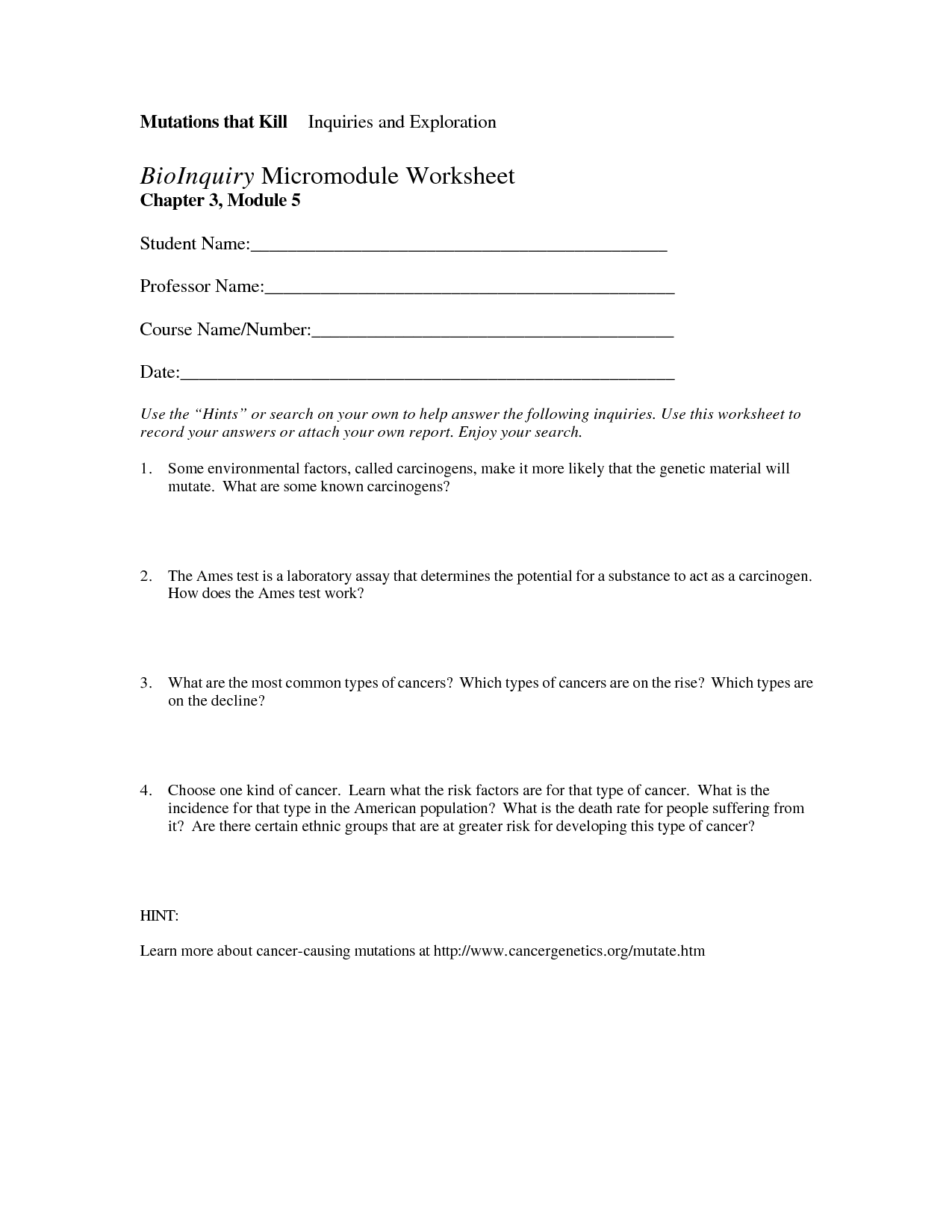
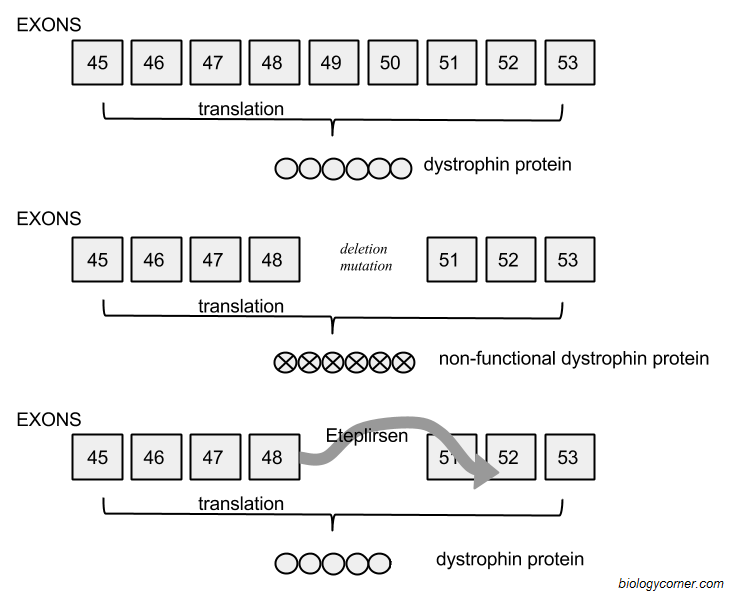
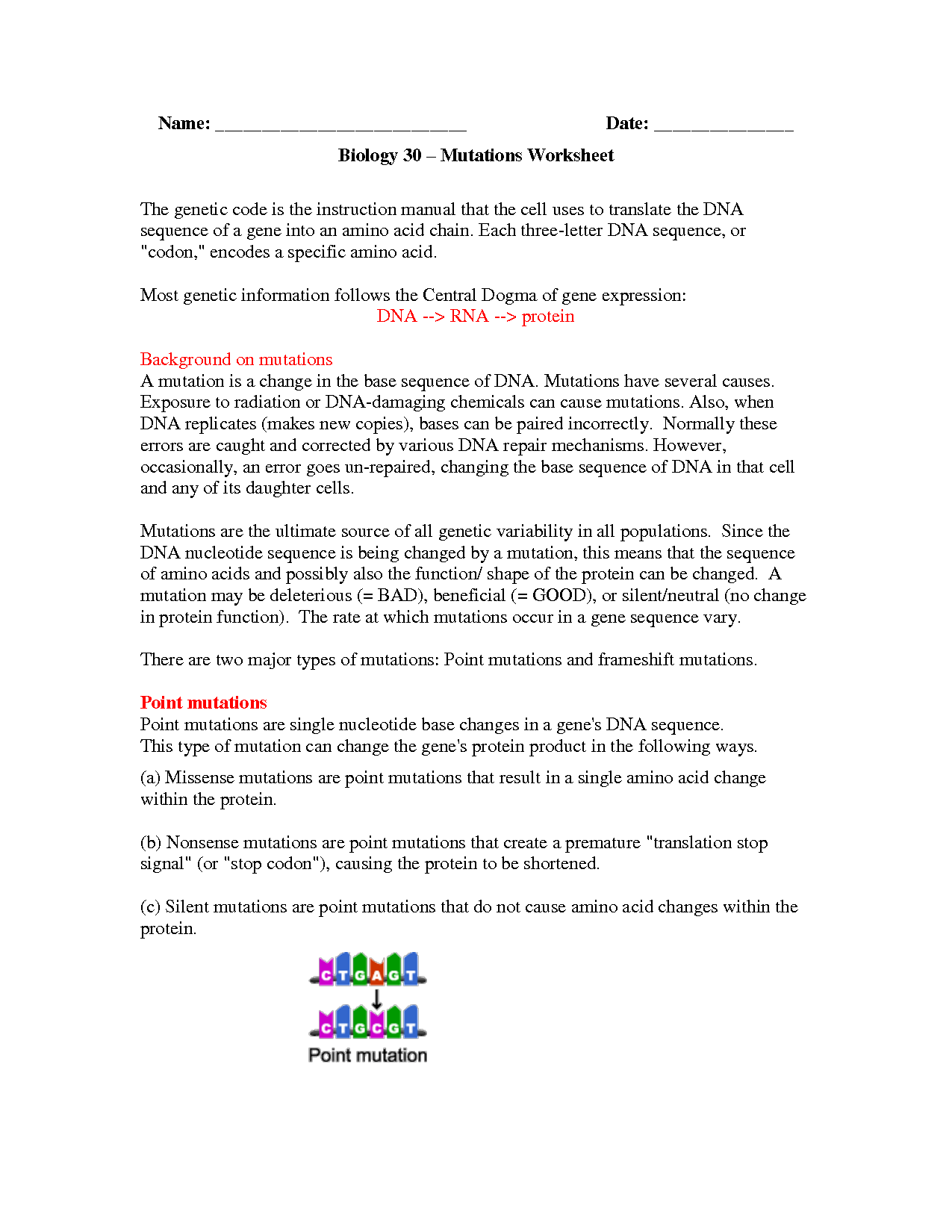














Comments